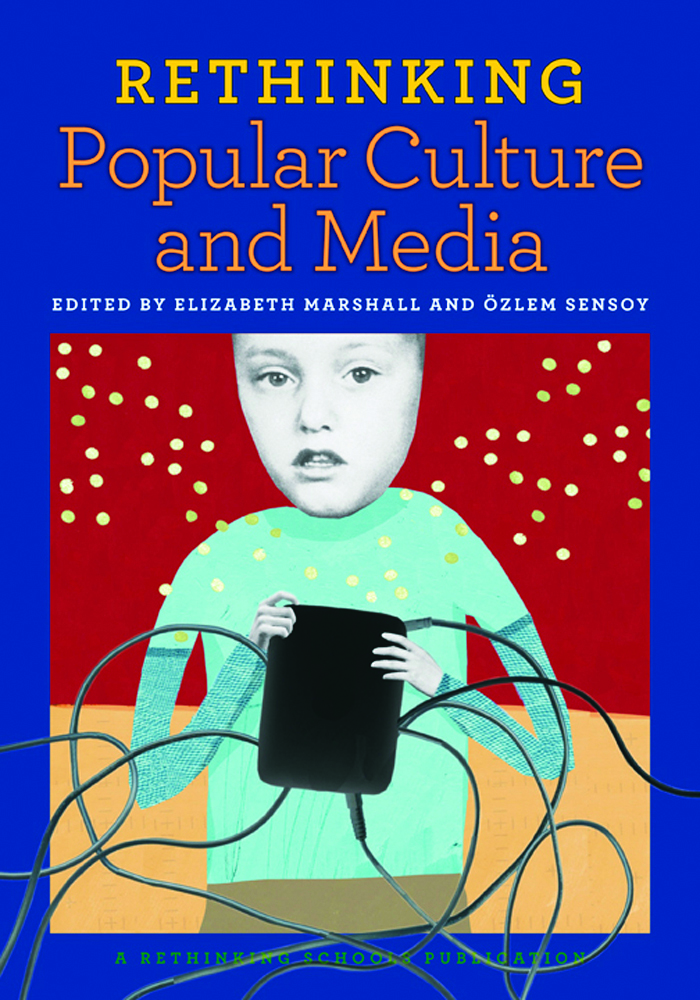By Bill Bigelow
On March 2nd, Universal Pictures is releasing the 3-D animated film, The Lorax, based on Dr. Seuss’s classic “environmental” book of the same name. The Campaign for a Commercial-Free Childhood (CCFC) recently sent out a “Save the Lorax” alert about the incredibly inappropriate marketing partnerships timed to coincide with the release of the film.
Despite the book’s lament about environmental ruin, CCFC reports that corporations are rushing to link their products with the film. For example, the Mazda CX-5 SUV now sports the “Truffula Seal of Approval.” IHOP child menus will offer choices such as Rooty Tooty Bar-Ba-Looty Blueberry Cone Cakes and Truffula Chip Pancakes. And companies like Comcast Xfinity TV, Target, IHOP, and HP will feature online Lorax games and sweepstakes for kids. Save the earth, kids: Buy more stuff!
As CCFC points out, the corporate rush to tie products to a book with a non-consumerist message is “cynical and hypocritical.”
But at the risk of sounding like a grumpy old so-and-so, let me also point out that The Lorax is not without its problems. For example, the book reduces the causes of environmental ruin to individual greed, which does not help children think clearly about the roots of today’s ecological crises. This narrow single-greedy-bad-guy focus does not help readers think about the much scarier prospect of an entire society organized around the quest for profit. And the chief environmental exploiter, the Once-ler, hires all his brothers, uncles, and aunts as workers, which makes it appear that the interests of workers and owners are identical, and that they are all inherently part of the problem. Again, this is not a helpful message for children. Instead of allowing his Swomee-Swans and the Bar-ba-loots to fight for themselves and for their environment, the only opposition comes from the Lorax—who advocates for, but actually disempowers other creatures by sending them off. Finally, in the end, the Once-ler repents, suggesting that there is hope for today’s rapacious Once-lers of the world—if only we can make them see the light.
These problems notwithstanding — or perhaps because of them — The Lorax makes a fine teaching resource. At the Zinn Education Project website, we’ve posted an article of mine that Rethinking Schools published in the early 90s, “The Lorax: Revisited and Revised,” and which was reprinted in our 1995 book Rethinking Schools: An Agenda for Change. In the article, I describe using The Lorax with an after-school class I taught for several years, Literature and Social Change. Students critiqued the book in class and then re-wrote it, in an attempt to re-imagine how we might present environmental problems and their possible solutions. The article also includes excerpts from a delightful and astute “alternative” Lorax, written by students Holly Allen, David Berkson, and Becky Willner — all of whom, many years later, are still doing important social justice work.
Stories like The Lorax are valuable resources to help children develop a critical literacy. Being able to evaluate both the strengths and the weaknesses of a piece of literature—or a political position, or a law, or almost anything else—is an important academic and life skill. And our students are going to need those skills in a world filled with IHOP Truffula Chip pancakes.
Related Resources
 Rethinking Popular Culture and Media, edited by Elizabeth Marshall and Özlem Sensoy. This anthology includes outstanding articles by elementary and secondary public school teachers, scholars, and activists who examine how and what popular toys, books, films, music, and other media “teach.” The essays offer strong conceptual critiques and practical pedagogical strategies for educators at every level to engage with the popular.
Rethinking Popular Culture and Media, edited by Elizabeth Marshall and Özlem Sensoy. This anthology includes outstanding articles by elementary and secondary public school teachers, scholars, and activists who examine how and what popular toys, books, films, music, and other media “teach.” The essays offer strong conceptual critiques and practical pedagogical strategies for educators at every level to engage with the popular.
 Rethinking Schools Special issue: Teaching for Environmental Justice, Volume 23 Issue 4 — Summer 2009
Rethinking Schools Special issue: Teaching for Environmental Justice, Volume 23 Issue 4 — Summer 2009
